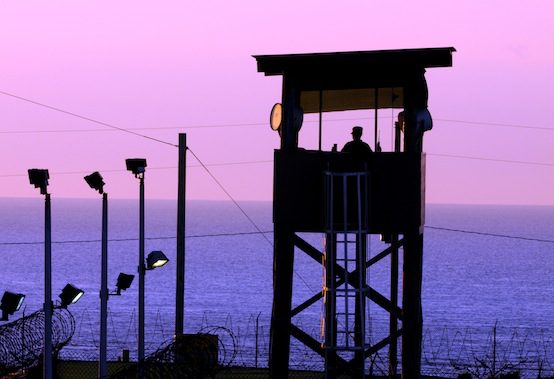Guantanamo Bay’s Hidden CIA Hotel

Adam Goldman and Matt Apuzzo of the AP revealed yesterday the existence of a previously unknown secret CIA facility at Guantanamo Bay, tasked with turning captured terrorists into double agents. Set up along with the makeshift prison facility as prisoners flowed into the American base in Cuba, the secret CIA outpost was best known by the Beatles-inspired name “Penny Lane.”
Candidates were ushered from the confines of prison to Penny Lane’s relative hominess, officials said. The cottages had private kitchens, showers and televisions. Each had a small patio.
Some prisoners asked for and received pornography. One official said the biggest luxury in each cottage was the bed, not a military-issued cot but a real bed with a mattress.
The cottages were designed to feel more like hotel rooms than prison cells, and some CIA officials jokingly referred to them collectively as the Marriott.
In contrast with the prison conditions, Penny Lane appears to have been practically a luxury resort. Indeed, cottages in the Caribbean are a hotly sought after commodity. The great, cruel irony of the Penny Lane program’s perks, however, is that they were obviously unavailable to prisoners without any actual terrorist connections. As Goldman and Apuzzo note, Bush administration officials at the time characterized Guantanamo detainees as the “worst of a very bad lot,” in Vice President Cheney’s words, or “among the most dangerous, best trained, vicious killers on the face of the Earth,” as Donald Rumsfeld described them.
In reality, many were held on flimsy evidence and were of little use to the CIA.
While the agency looked for viable candidates, those with no terrorism ties sat in limbo. It would take years before the majority of detainees were set free, having never been charged. Of the 779 people who were taken to Guantanamo Bay, more than three-fourths have been released, mostly during the Bush administration.
Those swept up in the heat of battle and spirited across the globe remained in their cells as some of the true terrorists were wined and dined by a CIA seeking their cooperation. The AP notes that “infiltrating al-Qaida has been one of the CIA’s most sought-after but difficult goals, something that other foreign intelligence services have only occasionally accomplished,” increasing their eagerness to set up shop and obtain what sources they could. They did have some successes, as “some of the men who passed through Penny Lane helped the CIA find and kill many top al-Qaida operatives, current and former U.S. officials said,” though “others stopped providing useful information and the CIA lost touch with them.”
As the years dragged on, however, and the detainee’s contacts faded in freshness, the program dried up, closing altogether by 2006. So today, the Guantanamo Bay prisons still stand, with what prisoners remain. Five years after Barack Obama took office pledging to close the prison, it stays open. And Penny Lane’s cottages, though empty, still stand.